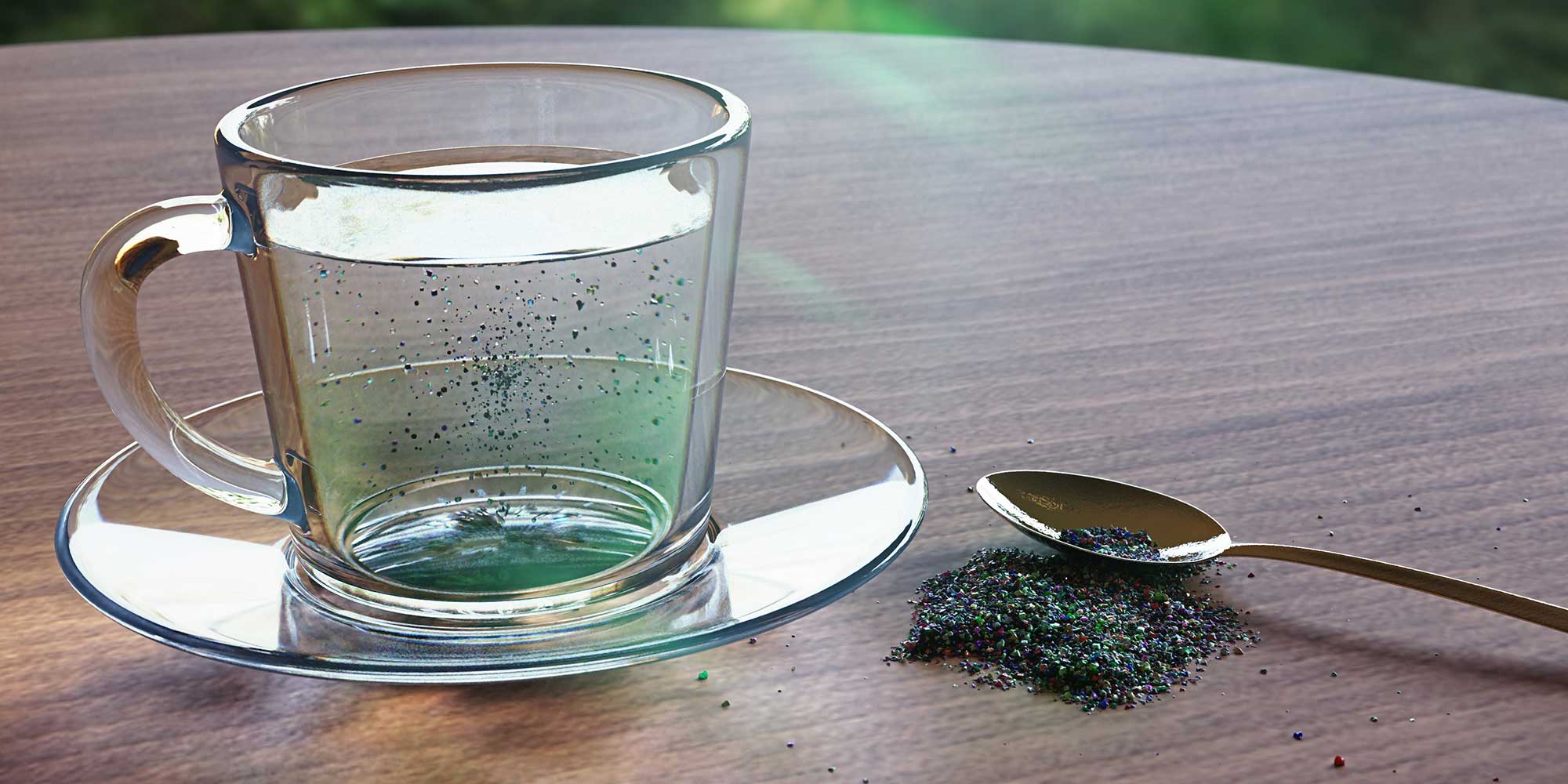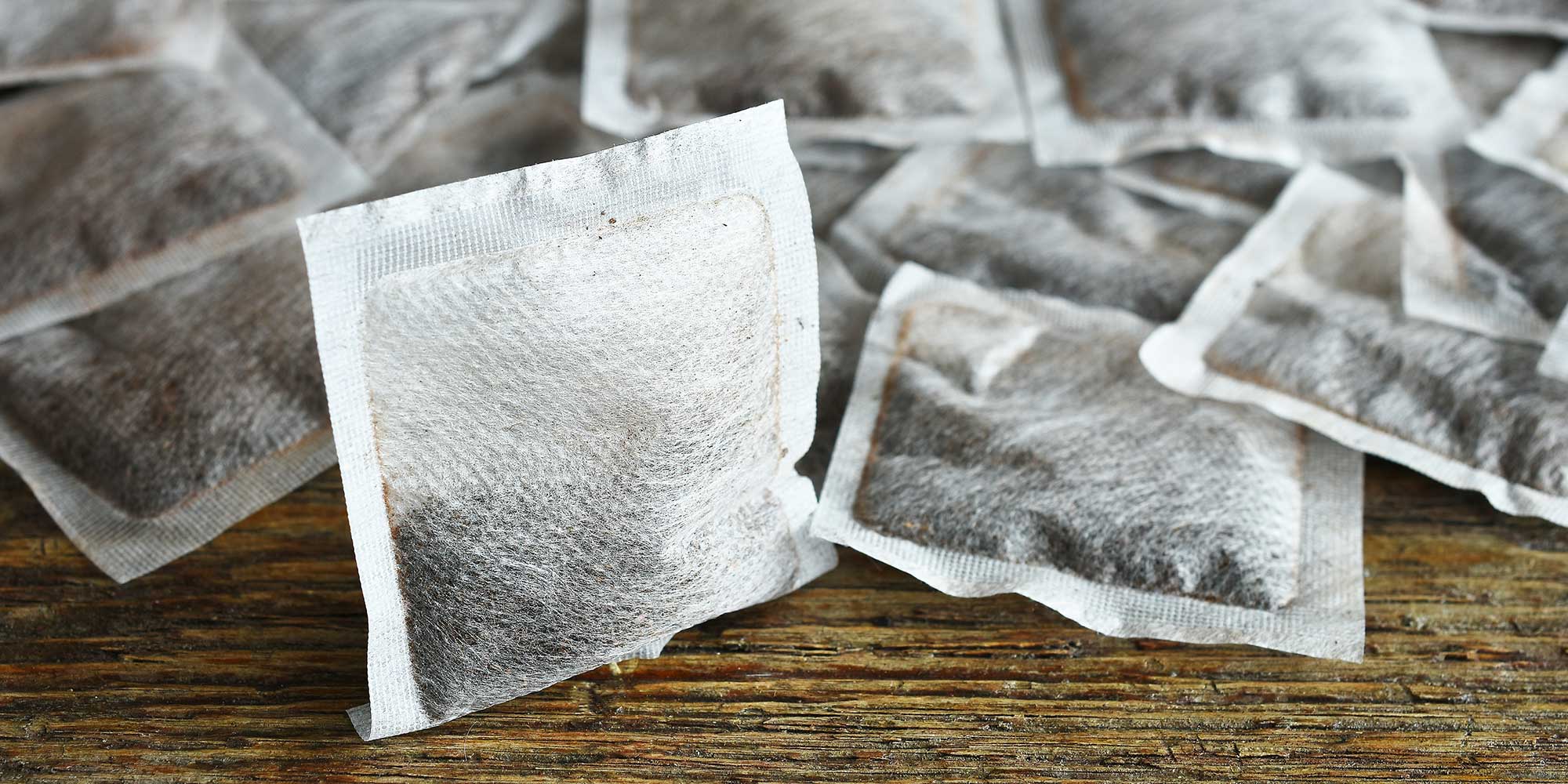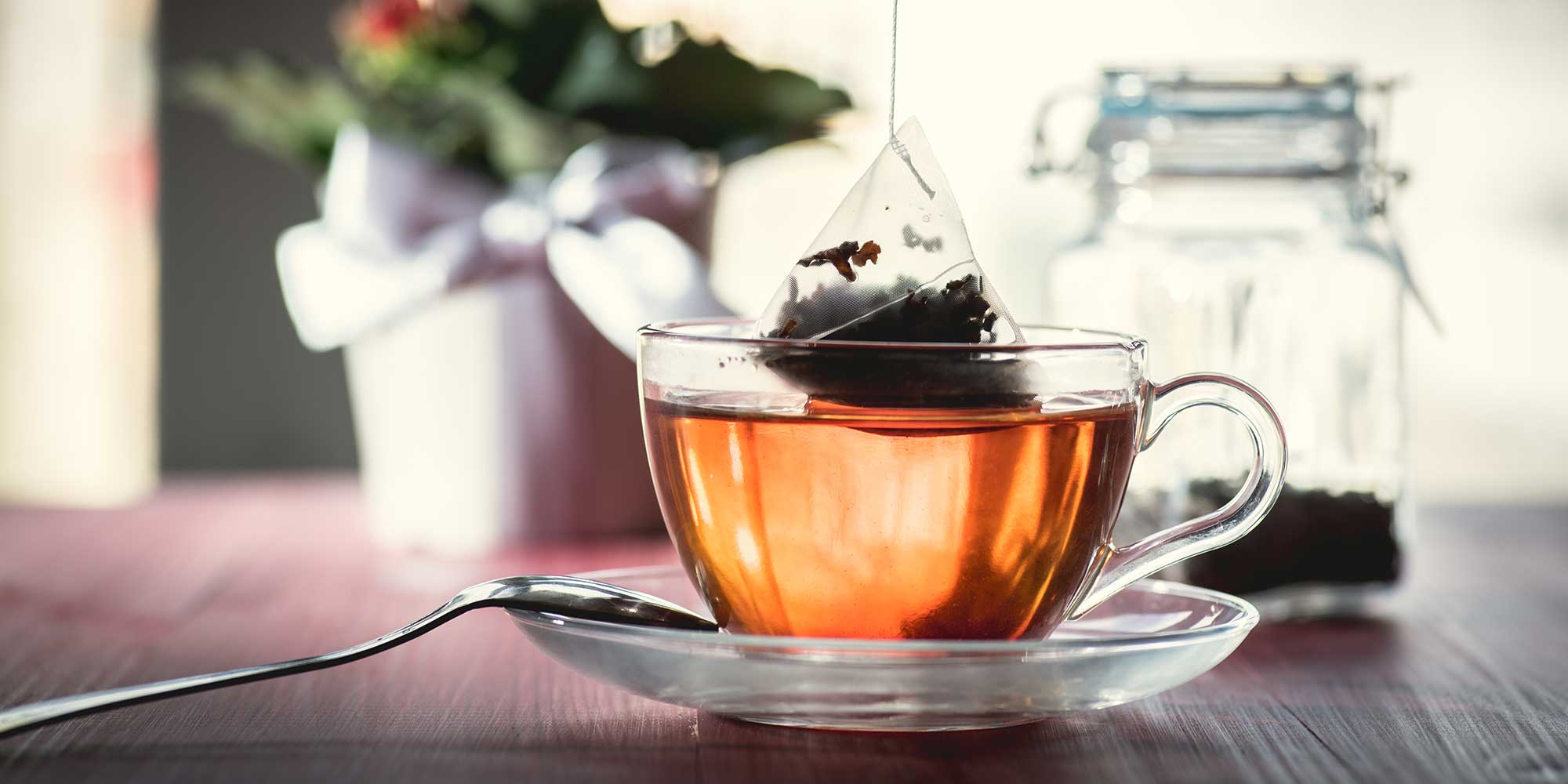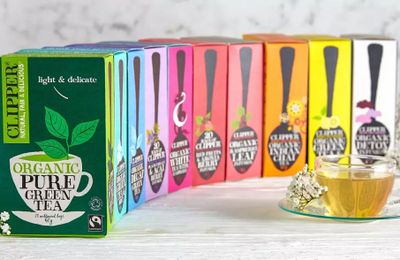Is there plastic in your tea?

It's often cited as the most commonly consumed beverage in the world after water. But our love of tea – particularly when it's conveniently separated into individual tea bags – is contributing to our microplastic exposure.
The adhesives used in tea bags can cause plastic to leach into the environment and our bodies. We've looked into what the 'plastic-free' options really mean, and how best to dispose of used tea bags.
Live more sustainably – get our free Sustainability newsletter to make changes for you and the planet
Plant-based plastics vs polypropylene
According to the UK Tea and Infusions Association, 97.5% of the tea purchased in the UK comes in tea bags. Traditionally, these bags were made with a small amount of a plastic called polypropylene, which seals the edges together. This conventional plastic will never fully break down, even in industrial compost. Instead, it disintegrates into smaller and smaller microplastics, which are often damaging to the environments they end up in.
Today, more and more brands use a bio-based plastic instead, known as polylactic acid (PLA). This is made of plant-based materials such as corn starch or sugarcane. It is viewed as more environmentally friendly than polypropylene as it doesn't contain fossil fuels – though these may still be used as an energy source in its production. It does biodegrade under the right conditions: high temperatures, humidity and particular microbes found in industrial composting. In the natural environment, it can take a very, very long time to biodegrade.
Some brands use the terminology 'plastic-free' for bags that contain PLA. They shouldn't really be doing this, as it is still a type of plastic. In our research, we found several references to 'plastic-free' on some of the websites of retailers and brands selling tea bags containing PLA. We even saw claims that these tea bags were 'microplastics-free'; unfortunately, this isn't true either, as PLA does release microplastics as it disintegrates. These could still have harmful effects on both the environment and human health.
More on the environmental and human health impacts: should we be worried about microplastics?
Should you put tea bags in your food waste bin?

Recyclenow.com advises that used tea bags can go in food waste caddies that are collected by local councils. Even those sealed with small amounts of polypropylene, as many anaerobic digestion (AD) facilities have a pre-treatment process that separates the tea (organic fraction) and screens out residual plastics.
This keeps organic material out of residual waste and landfill, helping to avoid methane emissions.
PLA-based tea bags may compost under certified industrial composting conditions, but they do not reliably break down in anaerobic digestion and are also typically screened out.
Can you put tea bags in your home compost bin?
Tea bags containing either conventional plastic or PLA will not break down effectively in home compost. That's because compost heaps just don't get hot enough for the process to work. As they slowly disintegrate, they will leave microplastics in your soil.
You could snip the tea bags open, empty the tea leaves into your heap and throw away the empty bags.
Microplastics and human health

There is emerging evidence that, when ingested, microplastics can cause oxidative stress (an imbalance between free radicals and antioxidants in the body), which can lead to cellular and tissue damage, disruption of the gut microbiome and immune or inflammatory responses.
And microplastics may be more damaging when exposed to UV or heat exposure (as in the case of tea bags). This can cause plastic particles to break down into even smaller pieces, which are easier for the body to absorb and therefore potentially more toxic. The research that has been done on PLA suggests it can also have harmful human health impacts, though there are still lots of unknowns about both PLA and conventional plastic.
Which tea bags contain plastics?
If you want to reduce your exposure to microplastics, loose-leaf tea is a better option. Or there are a few truly plastic-free brands.
Below is a list of popular tea brands and whether they contain plastic, PLA or are truly plastic-free.
| Brand | Plastic/PLA/Plastic-free | Packaging recyclability | Loose-leaf tea available |
| Aldi | PLA | Cardboard carton – can be recycled. Some ranges have an inner film bag (PP) – recycle at soft plastics collection points at large supermarkets. | No |
| Asda | PLA | Cardboard carton – can be recycled. Some ranges have an inner film bag (PP) – recycle at soft plastics collection points at large supermarkets. | Yes |
| Birchall | PLA | Cardboard carton – can be recycled. Individual paper wrapped envelopes – can be recycled as paper. | Yes |
| Brew | PLA | Cardboard carton – can be recycled. Larger packs – inner film (PP) – recycle at soft plastics collection points at large supermarkets. Smaller packs – bioplastic – put in food waste bin. | Yes |
| Clipper pillow bags | PLA | Cardboard carton – can be recycled Some ranges have an inner film bag (PP). – recycle at soft plastics collection points at large supermarkets. | No |
| Clipper string and tag bags | Plastic-free Certified home compostable | Cardboard carton – can be recycled. Individual paper wrapped envelopes – can be recycled as paper. Some ranges have an inner film bag (PP). – recycle at soft plastics collection points at large supermarkets | No |
| Dragonfly pillow bags | PLA | Cardboard carton – can be recycled. Foil wrap – recycle at soft plastics collection points at large supermarkets. | Yes |
| Dragonfly string & tag tea bags | Plastic-free Certified home compostable | Cardboard carton – can be recycled. Individual paper wrapped envelopes – can be recycled as paper (do contain very small amount of plastic). | Yes |
| Dorset | PLA | Cardboard carton – can be recycled. Individual paper wrapped envelopes – can be recycled as paper. | Yes |
| Good Earth | PLA | Cardboard carton – can be recycled. Inner film bag (BOPP) – recycle at soft plastics collection points at large supermarkets. | No |
| Hampstead | Plastic-free Certified home compostable | Cardboard carton – can be recycled. Most individual paper-wrapped envelopes – can be recycled or composted. Earl Grey and Green Tea & Jasmine, contain a thin plastic layer – can be recycled. | Yes |
| Lancashire | PLA | Cardboard carton – can be recycled. Inner film – bioplastic – put in food waste bin. | Yes |
| Lidl | PLA | Cardboard carton – can be recycled. | No |
| M&S | PLA | Cardboard carton – can be recycled Some ranges use an inner foil bag – recycle at soft plastics collection points at large supermarkets. | Yes |
| Morrisons | PLA | Cardboard carton – can be recycled. Some ranges use an inner film/foil bag (BOP) – recycle at soft plastics collection points at large supermarkets. | Yes |
| PG Tips Original | PLA | Cardboard carton – can be recycled. | Yes |
| Pukka | Plastic-free Certified home compostable | Cardboard carton – can be recycled. Individual paper wrapped envelopes – can be recycled as paper (do contain very small amount of plastic). | No |
| Sainsbury's | PLA | Cardboard carton – can be recycled. Taste the Difference ranges are in recyclable paper envelopes or an inner plastic film – r.ecycle at soft plastics collection points at large supermarkets | Yes |
| Teapigs | PLA | Cardboard carton – can be recycled. Inner film (PP) – recycle at soft plastics collection points at large supermarkets. | Yes |
| Tesco | PLA | Cardboard carton – can be recycled. Tesco Finest tea bags include an inner film bag (PP) – recycle at soft plastics collection points at large supermarkets. | Yes |
| Tetley black tea | PLA | Cardboard carton – can be recycled. Applies to black tea. | Yes |
| Tetley herbal | Conventional plastic | Cardboard carton – can be recycled. Smaller pack – foil wrap – recycle at soft plastics collection points at large supermarkets. Larger packs – outer film – recycle with bags at large supermarket. | Yes |
| Tick Tock | PLA | Cardboard carton – can be recycled. | Yes |
| Thompson's | PLA | Black tea – plastic laminate bag – recycle at soft plastics collection points at large supermarkets. Fruit and herbal ranges use cardboard carton – can be recycled. Inner foil pouch – not recyclable. String and tag ranges use cardboard carton – can be recycled. Paper envelopes – can be recycled. | Yes |
| Twinings (string and tag bags) | Plastic-free Certified home compostable | Cardboard carton – can be recycled. Foil wrap – recycle at soft plastics collection points at large supermarkets. Some ranges come with bags in individually wrapped paper envelopes – these are fully recyclable. | |
| Twinings Tea (everyday tea bags) | PLA | Cardboard carton – can be recycled. Foil wrap – recycle at soft plastics collection points at large supermarkets. Some ranges come with bags in individually wrapped paper envelopes – these are fully recyclable. | Yes |
| Typhoo | PLA | Cardboard carton – can be recycled. | Yes |
| Waitrose | PLA | Cardboard carton – can be recycled. Some ranges have an inner film bag (PP) – recycle at soft plastics collection points at large supermarkets. | Yes |
| Yorkshire Tea | PLA | Cardboard carton – can be recycled. Outer wrap on boxes is being phased out, but where it does still appear, this is made from polypropylene – recycle at soft plastics collection points at large supermarkets. Proper Breaks range has an inner wrap made from metallised polyethylene –recycle at soft plastics collection points at large supermarkets. | Yes |
Tea bags' outer packaging
In recent years, many tea bag brands have got rid of the cellophane film covering the cardboard carton, and some have removed the inner film packaging (made of foil or plastic).
Those that do still have a inner film usually use a polypropylene (PP) material, which can be recycled at large supermarkets. A few years ago many of these were made of a bio-based plastic like PLA but, because currently only just over half of UK households have a food waste collection, the only option for those without a food waste collection is to put it in your general waste. As a result, some brands have reverted to using standard plastic instead.



